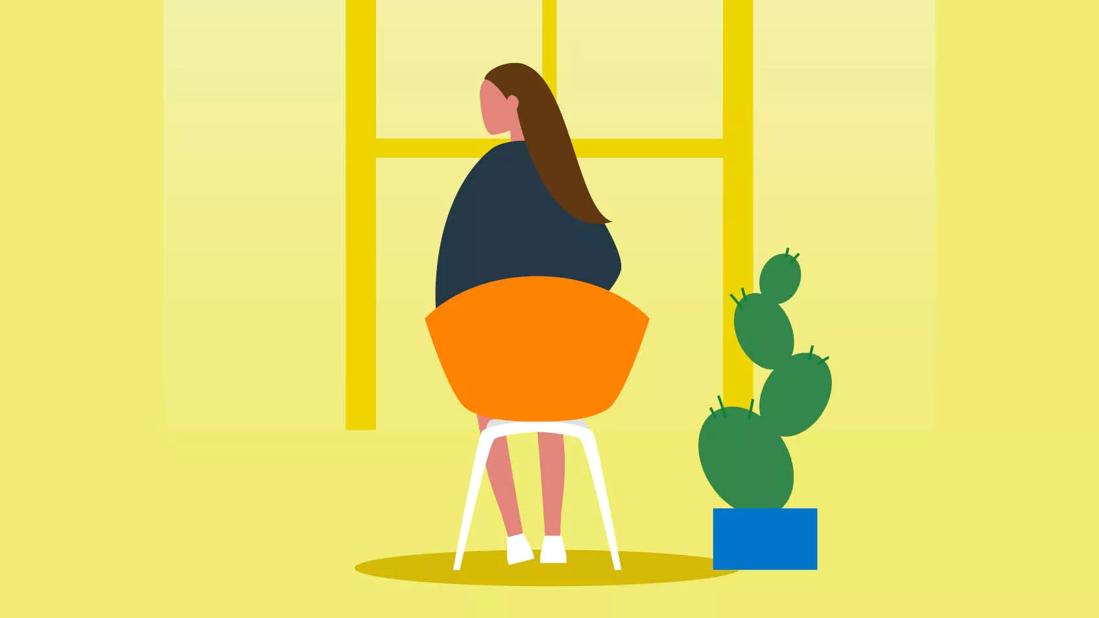Use the power of suggestion to change your thoughts, emotions and behaviors

When you hear the word “hypnotism,” what image comes to mind? If you grew up watching Saturday morning cartoons, we’re guessing you’re thinking of a mysterious character waving a pocket watch back and forth.
Advertisement
Cleveland Clinic is a non-profit academic medical center. Advertising on our site helps support our mission. We do not endorse non-Cleveland Clinic products or services. Policy
There’s definitely a spiral in there somewhere, too.
Of course, you can’t complete the picture without an air of malevolence. In these stereotypical representations of hypnosis, the subject is almost always hypnotized against their will.
TV and movie representations of hypnotherapy almost always get it wrong. They misrepresent hypnosis as magical manipulation, as a complete loss of control — as a thing that happens to you. In fact, hypnotherapy is a promising therapeutic practice performed by trained healthcare professionals.
Misconceptions about hypnotism can keep people from trying this mindfulness practice. They also close our minds to the possibility of self-hypnosis.
But self-hypnosis is real, accessible and — for many people — an empowering way to reorient yourself and meet your goals. We talked to holistic psychotherapist Jillian Williams, LISW-S, about self-hypnosis. Let’s learn what it’s for, how it works and how it might help you make positive changes in your life.
So, what is self-hypnosis anyway? According to Williams, it can best be described as a self-induced, intentional trance.
“We commonly enter everyday trances when we’re deeply engrossed in a book or movie,” Williams says. “It’s what happens when time seems to pass effortlessly. It’s like when we’re driving somewhere, arrive and cannot remember anything about the journey.”
Advertisement
Self-hypnosis, Williams continues, allows your mind to achieve a deep state of relaxation. While in this hypnotic state, you either make suggestions or set intentions for yourself, or use an audio stream or download as a guide.
Self-hypnosis is also an empowering way to improve control of your thoughts and emotions, Williams notes.
“When people are focused and motivated to accomplish a goal and most effectively use their abilities, they are at the peak of their personal power,” she explains.
“Self-hypnosis is a means of learning to focus yourself and motivate yourself. It helps you be more self-aware and make the best use of your innate skills,” Williams continues. “If you think about it, when you see other people do amazing things, they’re usually intensely focused on what they’re doing and what they’re trying to accomplish. Self-hypnosis is all about developing and using your focus in a goal-directed fashion.”
Our understanding of self-hypnosis is partial at best because it’s not as well studied as other kinds of hypnotherapy. “Although the field is promising, more research is needed to fully understand its potential benefits and any risks associated with its use,” Williams says.
We don’t know exactly what’s happening when you enter a self-induced trance. But it’s probably similar to what happens when a trained professional induces a trance.
“During hypnosis, the brain enters a unique state,” Williams explains. “The individual’s attention is highly focused and their level of awareness of external stimuli is decreased.
“Research has shown that there are specific changes in brain activity that occur during hypnosis. This includes changes in brain wave patterns, blood flow and activity in certain areas of the brain.”
We all have feelings, thoughts and behaviors that we’d like to change. Self-hypnosis can’t solve all of your problems. But it’s a popular option for addressing a wide range of issues, from anxiety to smoking cessation.
Williams shares some of the most common uses for this self-help technique:
One of the most common reasons people self-hypnotize is to promote weight loss, says Williams. Learning how to better control your thoughts may make it easier to adjust your attitude toward food, manage emotional eating and even reduce cravings.
Is it any wonder that stress and anxiety reduction are some of the most common reasons to start a self-hypnosis regimen? While it can’t get rid of the stressors in your life, it can help you relax — and get the negative thoughts and emotions to quiet down a bit.
Self-hypnosis may also help you change your attitude toward smoking. This can reduce the frequency and intensity of your cravings.
Advertisement
“I’m getting sleepy. Veeeeery sleeeeepy!”
It doesn’t quite work like that, but practicing self-hypnosis is one of many therapies that may help you sleep.
It’s not surprising that so many people turn to self-hypnosis for help hitting the hay. More than 70 million Americans are sleep deprived — because either they don’t get enough sleep or because the sleep they do get isn’t restful enough.
In addition to promoting relaxation, self-hypnosis may help set aside the negative thoughts and emotions that sometimes keep us up at night.
Self-esteem can be hard to come by and even harder to maintain. According to Williams, self-hypnosis is a great tool for changing negative thought patterns. It can also silence that pesky inner critic.
Anybody who lives with chronic pain can attest: It’s hard to make space for much else when you’re hurting. While self-hypnosis can’t cure what ails you, it can help you relax. It may also help you reduce your perception of pain — and any negative thoughts and emotions that come with it.
Do you have a big presentation coming up at work? Are you preparing to run your first marathon, or audition for the school play? Self-hypnosis may help you achieve at a higher level by promoting confidence and motivation, says Williams.
Advertisement
Williams breaks down self-hypnosis into 12 simple steps:
Advertisement
When you’re ready to leave the meditative state you’ve induced, do so gently, and with intention. Consider progressively “waking up” your body, starting from your toes or counting back from 10 into a state of alertness.
By now, you may be wondering, “If I can hypnotize myself, why would I ever see a hypnotherapist?”
It’s a reasonable question. Self-hypnosis and hypnotherapy are similar, but they aren’t the same.
“A professional hypnotherapist will guide you into a hypnotic state. And they can provide customized scripts and suggestions that are tailored to your specific needs,” Williams clarifies. She also notes that a professional session is likely to be more focused and goal-oriented.
A professional hypnotherapist can help you refine your self-practice, too. But if you don’t have access to that kind of care, it’s safe for most people to attempt self-hypnosis without supervision.
“Both self-hypnosis and professional hypnotherapy can be effective,” Williams says. “But the choice between the two will depend on individual needs, goals and preferences. If you’re unsure, consult with a licensed practitioner to can help you determine which approach will be most beneficial.”
While the steps of self-hypnosis are doable for most people, not everybody will get the same results from the practice at first. Some may struggle to induce a trance.
A lack of experience, difficulty focusing or skepticism about the process can make it harder to induce self-hypnosis, says Williams. Or you may not reach the same level of hypnotic trance as other people.
“If you have difficulty inducing self-hypnosis, you may find it helpful to work with a qualified hypnotherapist,” Williams advises. “They can guide you through the process and give you feedback on your progress. They can also help address any underlying issues that may be preventing you from entering a hypnotic state. And, they can teach you different techniques such as progressive relaxation, visualization and guided imagery.”
If your attempts at self-hypnosis have left you a bit deflated, take heart. “It’s important to note that self-hypnosis is a skill that can be learned and practiced like any other,” Williams reassures. “With time, patience and practice, most people can learn to self-induce hypnosis.”
While most people can induce a trance-like state, that doesn’t mean it’s always a good idea. There are some people who should use caution when performing self-hypnosis — or avoid the practice altogether.
While self-hypnosis — and hypnotherapy more generally — are safe for most people, it’s not appropriate or effective in all cases. You should consult with a healthcare professional or licensed practitioner to determine if hypnosis is right for you if:
Whether you fit into any of these categories or not, Williams reminds us “self-hypnosis and hypnotherapy should not be used as a substitute for appropriate medical or psychological treatment.
“If you have a specific medical condition or are experiencing mental health issues, it’s always best to consult with a healthcare professional or a licensed practitioner first. They can help you determine if hypnosis is appropriate for you and if it will be helpful in your specific case.”
Williams also notes it’s important to:
Self-hypnosis can be a useful tool for self-improvement and well-being. But it’s best to consult with a licensed practitioner before trying it — and to use it in conjunction with other healthy habits and therapies.
Self-hypnosis is one of many useful techniques for changing negative thoughts, emotions and behaviors. It can also help you achieve your goals and persevere in the face of setbacks.
But it’s not a cure-all. And, as Williams puts it, “it may take some time and practice to achieve your desired results.” Retraining your mind takes time and can’t happen in isolation. Whether you’re seeing a therapist, practicing meditation or using other methods to effect change in your daily life, make sure you’re not relying exclusively on self-hypnosis.
After all, the magic isn’t in the practice. It’s in realizing your own power to make change happen.
Learn more about our editorial process.
Advertisement

It’s more than just avoiding gluten — it’s also important to focus on your mental and emotional health

Like being your own best friend in times of trouble, self-love is an act of self-preservation

Studies show a strong self-care regimen can improve symptoms and overall health

Whether you’re trying to work out more, drink less or manage stress, we can help set you up for success

This state of mind is all about focusing on what you love and enjoy (minus the FOMO)

Practice meditation together, make a unique-to-them care package and embrace emotions

Silence your inner critic by treating yourself with kindness, understanding and empathy

From icing to taping, experts chime in on what’s worth trying and what’s better off skipping

Type 2 diabetes isn’t inevitable with these dietary changes

Applying a hot or cold compress can help with pain